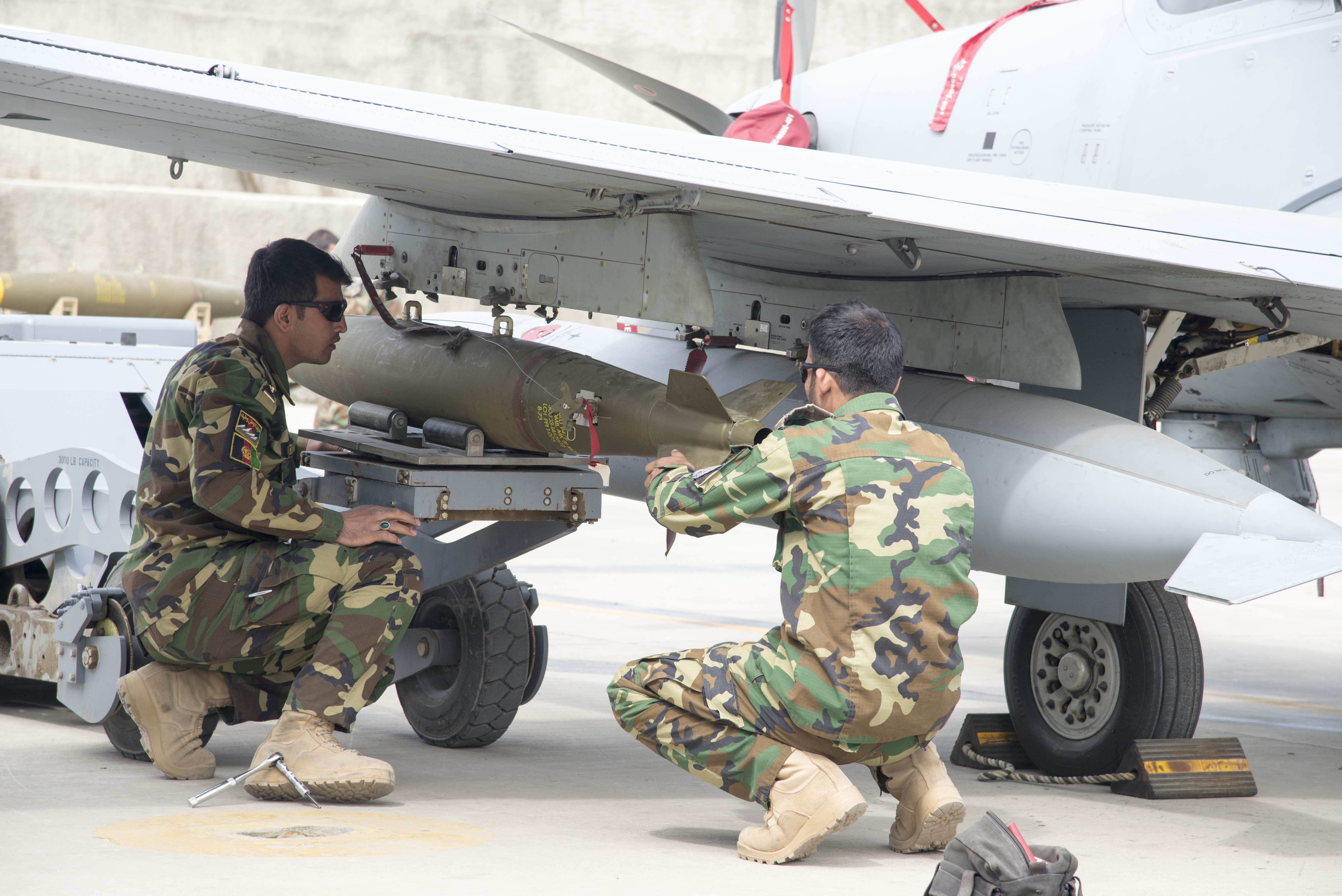
Afghan Air Force A-29 maintainers manuver a bomb in place before attaching it to an A-29 March 6, 2018, Kabul Air Wing?, Afghanistan. USAF photo by Staff Sgt. Jared J. Duhon.
The overall end strength of the Afghan military, including the Afghan Air Force, is below its authorized end strength while much of the country’s fledgling aircraft fleet is unavailable.
In a quarterly report, the Pentagon’s Special Inspector General for Afghanistan Reconstruction found that the Afghan military is operating at less than 86 percent of its authorized strength. The combined military and police total is 296,000 personnel, while the authorized total is 340,000.
While the AAF-specific total is classified, the AAF is authorized 9,300 personnel, including 300 civilians, according to SIGAR.
As of early March, the US has appropriated about $6.4 billion to develop the AAF from Fiscal 2010-2018—$1.4 billion of which is for 2018. This includes $709.8 million for the transition from Russian-made helicopters to refurbished, American-made UH-60 Black Hawks.
The AAF currently has 132 aircraft, including 25 MD-530 helicopters, five of which are unavailable; 24 C-208 utility airplanes, one unavailable; 47 Mi-17 helicopters, 24 unavailable; 20 A-29 attack airplanes, two unavailable; four C-130s, two unavailable, eight Black Hawks; and four unavailable Mi-35 helicopters. US funding has purchased, but not yet fielded, 45 more Black Hawks, 30 MD-530s, six A-29s, and 10 AC-208s.
Between Nov. 1, 2017, and Jan. 31, AAF crews flew 8,115 sorties. Despite the growing number of Black Hawks, the Russian-made Mi-17s are still flying the most sorties, with an average of 829 hours per month.
There are still a relatively small number of crews available for any of the AAF’s airframes. For example, 12 total pilots are trained on the C-130, along with 19 total aircrew. For the C-208, there are 44 total pilots and just two loadmasters. There are 18 total A-29 pilots, 60 pilots for the MD-530, 76 pilots for the Mi-17s, 13 for Mi-35s, and 22 in training for the Black Hawks.